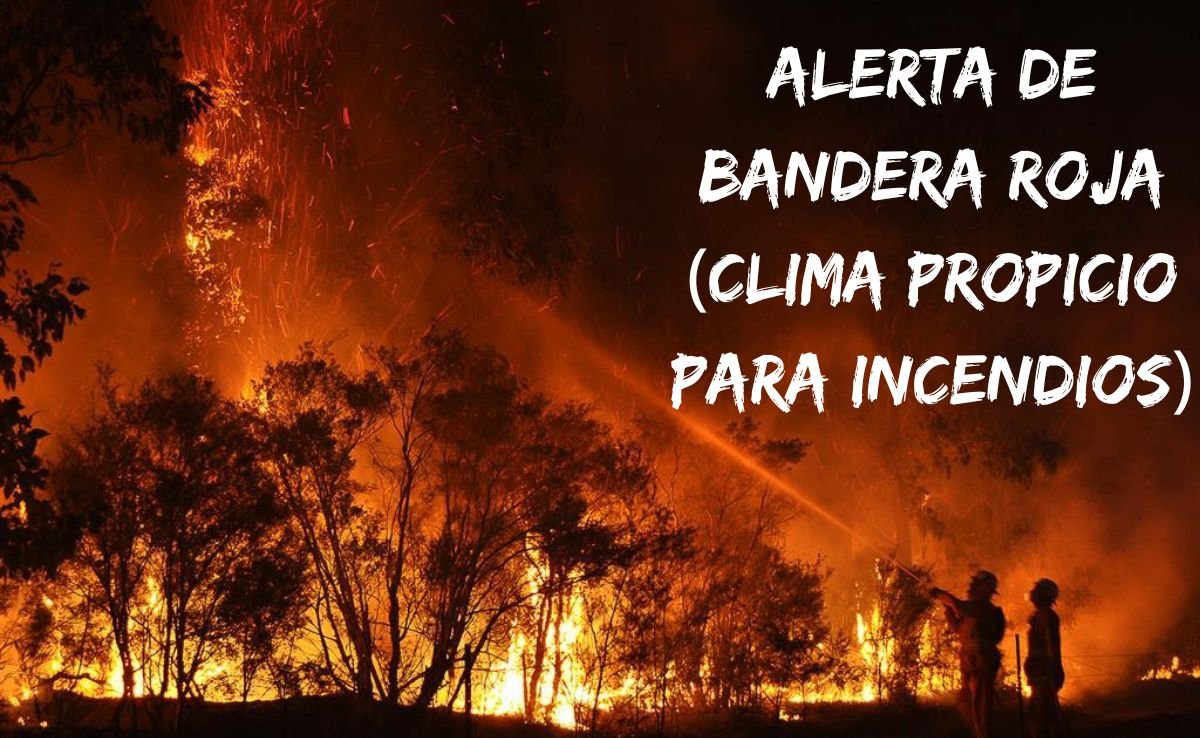The red flag alert is a critical indicator issued when the weather conditions are favourable to spread wildfires. Learn about the red flag warning alerta de bandera roja (clima propicio para incendios). Understand the implications of the serious issue and the communities residing in fire-prone areas. When the red flag warning is issued, it includes multiple environmental factors which could rapidly increase the wildfires. In this article we are going to discuss the red flag warning and what triggers these situations.
What Triggers The Red Flag Warning?
A red flag warning is issued when there is a specific weather condition which can create a risk of wildfires. Few factors such as high temperature, gusty winds and high humidity can contribute to these warning situations. These factors create an environment where fires can quickly catch and fire, which can lead to threat to lives and property.
Hot Temperature Can Increase Fire Risk

Hot or warm temperatures are the primary factor in the formulation of red flag warning. High heat accelerates the drying of vegetation, which can increase the risk of catching fire. Warm air can create unsteady atmospheric conditions. When the temperature is increased, vigilance and precautionary measures become important to mitigate the risk of the wildfires.
Low Humidity Level
Low humidity levels increase the seriousness of red flag warnings. When the humidity level drops moistures in the vegetation reduces which increases the flammability. Dry air also facilitates rapid fire in the vegetation, as it enables flames to engulf the surrounding vegetation more easily. Monitoring the humidity level is an important red flag warning to control the situation of fire activity.
Drought Conditions
Conditions like drought can increase the chances of getting wildfires in the area. Due to the prolonged period of drought, it leads to dry vegetation, creates abundant fuel for the fires and also due to drought vegetation is more prone to ignition. It can lead to the risk of fire outbreaks. The red flag warning is often issued in drought-like conditions and highlights the fire danger due to the drought.
Impact of Strong Winds
Strong winds can increase the chances of wildfire risk during red flag conditions. Wind can rapidly spread the flames carrying the burning particles over a long distance. The gusty winds can challenge firefighting efforts for cooling up the flames. By understanding the pattern of wind and their impact can help in fire management during the red flag event.
Protocol of Red Flag Warning

It is important to follow the safety protocols established by the local authorities during the red flag warning. Avoid those activities which can spark fires such as outdoor burning or using the equipment which can generate sparks or heat. Stay updated about the weather conditions and follow the protocols or orders. Preparedness and swift action can help to tackle the impact of wildfires during such situations.
Monitor Red Flag Warning
Staying updated about the red flag warning is important for an individual residing in the fire prone areas. Monitor the news weather forecast and with the communication channels for the updates of the condition. Make yourself familiar with the situation used during the red flag warning. Take proactive measures to protect or safeguard lives and the property. Through staying updated and prepared yourself and the community can better respond to the threat of the wildfires during the red flag situation.
Community Preparedness
Community preparedness plays an essential role in controlling the impact for wildfires during the red flag warnings. Take precautions during safe fire practices such as maintaining space around the properties and participating in the community wildfires preparedness events. Collaborate with your neighbours, local fire station or department and emergency responders to protect the wildfire situations.
Firefighter Readiness
The firefighters are on high alerta de bandera roja (clima propicio para incendios)and prepared to respond smoothly to any wildfire during the red flag events. The fire departments prioritise resources allocation and coordination to tackle the fires. Community support and the evacuation orders can help firefighter efforts and enhance the overall procedure. Recognizing the efforts and dedication of the firefighters during the red flag warning.
Evacuation Procedure
During the red flag warning, it is important to follow the evacuation procedure safely. Be prepared with an evacuation plan and prepare an emergency kit with some essential items. Stay updated about the evacuation routes and the order issued by the authorities. Prioritise your personal safety and evacuate early as per the instructions.
Public Safety Measures

Public safety measures are important to reduce the risk of wildfires during the red flag warning. It is important to implement temporary restrictions on the activities which can lead to a fire outbreak such as fireworks, spark or heat equipment. It is important to educate the public about the fire and the precautions, to foster a sense of responsibility and awareness.
Conclusion
It is important for the communities to stay updated with the alerta de bandera roja (clima propicio para incendios) and take precautions to avoid fire outbreaks. By recognizing the environmental factors which can help to contribute to avoid fire risk. Individuals can minimise the threat posed during the wildfires by following the protocols. Stay informed, prepared and prioritise your safety to lessen the impact of wildfires.
Also Read About: Geekzilla Tio Geek: Everything You Need to Know






